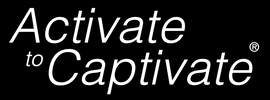|
During a presentation, nothing steals the spotlight away from a presenter the way fillers (um, like, ya know) do. People work hard to make sure their presentation content is compelling, organized, and elegantly designed. They rehearse the speech over and over until they feel comfortable with the flow. However, once they get in front of an audience, they notice those pesky fillers — um, uh, like — peeking out. Until soon, the word they’ve said the most throughout their presentation isn’t the main topic, it is a filler.
WHY DO WE USE FILLERS? People most commonly use fillers when they are trying to form their thoughts. Instead of staying silent they interject sounds (uh, um) or words (like, so). Speakers often fear silence. This fear stems from every presenter’s nightmare of forgetting their speech and standing up on the stage not knowing what to say. Silence can trigger that inner panic about forgetting. Therefore most speakers subconsciously would rather fill their speech with filler words than be on stage without anything to say. IT IS OK TO SAY UM In real life, people say um, uh, so, etc. During a long presentation, if a filler is used, it is fine. I am always a fan of a conversational tone over a fake, memorized one. Normally the audience won’t register a couple of fillers. However, when those filler words start being noticeable and take away from the momentum of your speech, that is when there is an issue. HOW TO DECREASE FILLERS The first step when addressing any issue is to be conscious that one exists. If a speaker does not know that they have an issue, they won’t take the time to fix it. During a rehearsal ask the audience if they notice a lot of filler words. Or, listen to a recording of a rehearsal or previous presentation and count how many times a filler is used. The next step is actually working on the issue by being extra conscious of fillers during rehearsal. Get into the habit of pausing instead of saying fillers. If a filler starts being spoken, stop and pause before beginning the speech again. Sometimes it is helpful to start the section over and focus on not using the filler words. However, use this technique sparingly so a new habit doesn’t form of always restarting sentences whenever a filler word pops up. Another tool to decrease fillers is to take extra time practicing the content. Make sure the ideas flow naturally. If the ideas are clear and fully flushed out, there won’t be a need to say fillers. SUMMARY Once your realize you use fillers, make a conscious effort to pause instead of using them. Without fillers, the message will be stronger and the presentation will be more powerful. Comments are closed.
|
AuthorBri McWhorter is the Founder and CEO of Activate to Captivate. Categories
All
Videos
Archives
June 2024
|
Click to Contact
© 2014-2024 Activate to Captivate, LLC
All Rights Reserved
All Rights Reserved

 RSS Feed
RSS Feed
